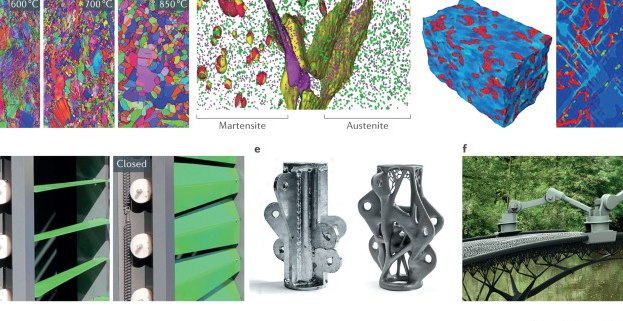
Table of Contents
Defining architectural materials science
Architectural materials science is a multidisciplinary field that combines principles of engineering, physics, chemistry, and architecture to understand the behavior and properties of materials used in construction. It goes beyond selecting materials based on aesthetics or cost factors alone; instead, it aims to analyze their performance in terms of durability, structural integrity, energy efficiency, and environmental impact. By studying the chemical composition, microstructure, and mechanical properties of building materials such as concrete, steel, wood, glass, and composites, architects can make informed decisions that optimize the sustainability and longevity of their designs.
One key aspect of architectural materials science is understanding how different building components interact with each other under various environmental conditions. For example, architects need to consider factors like moisture levels and temperature fluctuations when selecting insulation material for a wall system. By taking into account these interdependencies between materials and their environment early on in the design process through simulations or testing methodologies, architects can ensure optimal performance over time while reducing potential maintenance costs.
Furthermore,The incorporation of innovative technologies has opened up new possibilities within architectural materials science. Researchers are exploring the use of smart materials that can respond to changes in their surroundings in real-time. This includes self-healing concrete that repairs cracks automatically or dynamic glazing systems that adjust opacity based on sunlight intensity. As technological advancements continue to push boundaries in material innovation, integration with architectural design becomes more sophisticated than ever before. With a deep understanding-gathered from architectural material science- designers have the ability not only to create
The importance of materials in architecture
In architecture, materials play an essential role in both the functionality and aesthetics of a building. The choice of materials can greatly impact how a structure is perceived, experienced, and even how sustainable it is. For example, the use of natural materials such as wood or stone can create a warm and inviting atmosphere, while modern materials like steel and glass can give a building a sleek and contemporary look.
Moreover, materials influence the performance of buildings in terms of energy efficiency and environmental impact. With advancements in technology, architects now have access to innovative materials that offer improved insulation properties or are made from recycled or eco-friendly sources. These choices not only contribute to reducing energy consumption but also help minimize the carbon footprint associated with construction projects.
Furthermore, architectural materials science embodies an interdisciplinary approach that merges engineering principles with artistic vision. By understanding the characteristics and behavior of different materials under various conditions, architects can make informed decisions about which ones to use for specific design challenges. This knowledge enables them to push the boundaries of what is possible in architecture while ensuring structural stability and durability.
Overall, architectural materials science underscores the importance of selecting appropriate materials that align with both functional requirements and sustainability goals. By carefully considering different options based on their performance attributes and visual qualities, architects can create spaces that are not only aesthetically pleasing but also ecologically responsible. As we move towards more environmentally conscious design practices, understanding the significance of materials will continue to hold immense value in shaping our built environment for generations to come.
Relationship between materials science and architecture
Materials science and architecture have a symbiotic relationship, where the advances in one field often drive progress in the other. The development of new materials with specific properties has enabled architects to design and construct buildings that were previously unimaginable. For example, the use of reinforced concrete revolutionized modern architecture by allowing for taller structures with greater structural integrity.
In turn, architects have also been instrumental in driving advancements in materials science. Their unique demands for sustainable, energy-efficient, and aesthetically pleasing buildings have pushed scientists to develop new materials that meet these criteria. From solar panels integrated into building facades to self-healing concrete that repairs itself when cracks occur, architects are fueling innovation in materials science.
This interplay between materials science and architecture is further enhanced by technological advancements such as 3D printing. Architects can now explore complex designs and geometries that were previously difficult or impossible to achieve using traditional construction methods. And with the constant evolution of nanotechnology, we can expect even more exciting collaborations between these two fields as scientists uncover new ways to manipulate matter at an atomic scale.
In conclusion, the relationship between materials science and architecture is not only crucial but also ever-evolving. As architects continue to push boundaries with their visionary designs, material scientists will be called upon to create innovative solutions that make their dreams a reality. Together, they forge a path toward sustainable and transformative architectural masterpieces that will shape our world for generations to come.
Key principles of architectural materials science
One key principle of architectural materials science is the understanding of material properties and their relationship to design. Architects need to consider the physical and chemical properties of materials in order to select the right ones for a particular application. For example, when designing a skyscraper, architects must choose materials with high strength and durability to withstand the forces acting on the building.
Another important principle is sustainability. Architectural materials science emphasizes the use of environmentally friendly materials that have minimal impact on the environment throughout their life cycle. This includes using renewable resources, recycling materials, reducing energy consumption during production, and minimizing waste. By incorporating sustainable principles into architectural design, architects can create buildings that are not only aesthetically pleasing but also eco-friendly and energy-efficient.
Lastly, architectural materials science recognizes the importance of innovation in material development. As technology advances, new architectural materials are being created with enhanced properties such as improved thermal insulation or increased fire resistance. Through research and experimentation, architects can push the boundaries of material science to create unique designs that blend functionality with artistic expression.
By focusing on these key principles of architectural materials science- understanding material properties, promoting sustainability, and embracing innovation- architects can make informed decisions about which materials to use in their designs. This ensures that buildings are not only visually appealing but also safe and environmentally responsible structures that contribute positively to our built environment.
Examples of innovative materials in architecture
One innovative material that has gained popularity in architecture is carbon fiber. It is known for its strength and lightweight properties, making it ideal for creating unique and visually dynamic structures. Architects have used carbon fiber to create curved roofs, intricate facades, and even entire bridges. Its flexibility allows for limitless possibilities in design, pushing the boundaries of traditional architectural forms.
Another example of an innovative material is 3D-printed concrete. This technology revolutionizes the way buildings are constructed by allowing architects to digitally design and fabricate complex shapes that were previously difficult or impossible to achieve with traditional construction methods. Not only does this save time and money, but it also opens up new opportunities for sustainable building practices as less waste is produced during the construction process. 3D-printed concrete has been utilized in the creation of intricately designed walls, furniture pieces, and even entire buildings.
These examples highlight how materials science has led to groundbreaking advancements in architecture. With the constant exploration of new materials and technologies, architects have access to a vast array of innovative options that can transform their visions into reality while pushing the boundaries of what is possible in architectural design.
Future trends in architectural materials science
As the field of architecture continues to evolve, so does the science behind architectural materials. Future trends in architectural materials science are pushing boundaries and redefining what is possible in building design. One exciting trend is the development of smart materials that can adapt to changing conditions autonomously. These materials can respond to factors such as temperature, humidity, and light, altering their properties to improve energy efficiency and comfort within buildings.
Another emerging trend in architectural materials science is the integration of sustainable practices into material design. With a growing emphasis on reducing carbon emissions and minimizing waste, architects are seeking out innovative solutions for sustainable construction materials. From biodegradable plastics made from renewable resources to self-healing concrete that repairs cracks without human intervention, the future of architectural materials science is focused on creating environmentally friendly alternatives without compromising on durability or aesthetics.
In addition to smart and sustainable materials, advancements in nanotechnology are poised to revolutionize the field of architecture. Nanomaterials exhibit unique physical properties due to their small size, making them incredibly versatile for use in construction. From self-cleaning facades that repel dirt and pollutants to lightweight yet strong structural elements made from nanocomposites, these futuristic materials have the potential to enhance both functionality and aesthetics in buildings.
Overall, the future trends in architectural materials science hold tremendous potential for creating more efficient, sustainable, and visually stunning structures that cater to our ever-changing needs as a society. As architects continue exploring new technologies and pushing boundaries with material innovation, we can expect architecture to become
Conclusion: The role of materials science in shaping the future of architecture.
In conclusion, the role of materials science in shaping the future of architecture cannot be overstated. As society continues to seek sustainable and innovative solutions for our built environment, materials scientists are at the forefront of creating new possibilities. They are developing advanced materials with improved properties that can enhance the durability, energy efficiency, and aesthetic appeal of buildings.
Moreover, materials science is opening up doors to architectural design that were once unimaginable. New composite materials allow for creative facades and structures that challenge conventional forms and enable architects to push boundaries like never before. From self-healing concrete to bio-based materials, these advancements not only offer practical benefits but also have the potential to transform architectural aesthetics and redefine our notion of what a building can be.
In summary, as technology advances in tandem with materials science, architects will have access to a wider range of sustainable and high-performance materials than ever before. This will undoubtedly shape the future of architecture by enabling designs that are both environmentally friendly and visually stunning. The collaboration between architects and materials scientists will continue to be an essential driving force behind innovation in construction practices, leading us towards a more sustainable built environment for generations to come.


